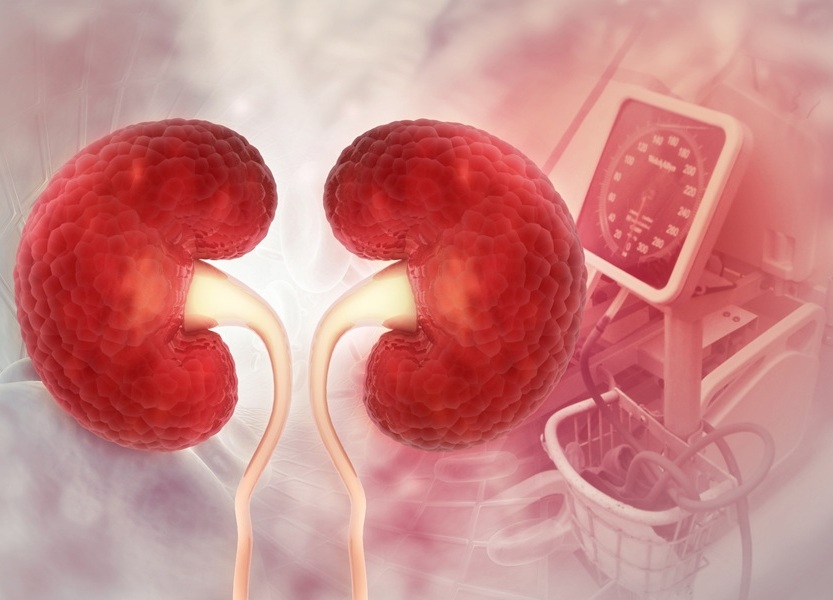Novel LC-MS/MS Assay Detects Low Creatinine in Sweat and Saliva
|
By HospiMedica International staff writers Posted on 01 Jan 2025 |

Timely and accurate monitoring of renal function is essential for managing patients at risk of acute kidney injury (AKI), which affects about 12% of hospitalized patients and up to 57% of ICU patients. In approximately 20% of these cases, the condition progresses to more severe stages of AKI, leading to longer hospital stays, higher mortality rates, and an increased need for invasive renal replacement therapies. Early intervention, driven by frequent or continuous monitoring of renal function biomarkers like creatinine, could potentially delay this progression. As renal failure can advance quickly, frequent venipuncture for creatinine testing is required. Recent advances in microfluidic devices and biosensors have led to the exploration of alternative biofluids, such as sweat and saliva, for non-invasive, continuous monitoring of creatinine. Researchers have now developed a novel Liquid Chromatography-Tandem Mass Spectrometry (LC-MS/MS) assay for detecting low creatinine levels in these biofluids.
Researchers at Eindhoven University of Technology (Eindhoven, The Netherlandsl) investigated the correlation between creatinine concentrations in sweat, saliva, and plasma during hemodialysis, with an eye toward future biosensor applications. They measured creatinine levels in sweat, saliva, and plasma from 40 patients undergoing hemodialysis. Using the novel LC-MS/MS assay, they quantified low creatinine concentrations in these biofluids. Correlation analyses were conducted to compare creatinine levels across the biofluids. The LC-MS/MS assay demonstrated excellent accuracy (93.9% to 97.8%) and low imprecision (3.4% to 8.1%) for measuring very low creatinine concentrations, with a limit of quantitation of 1.26 µmol/L.
The study revealed strong correlations between creatinine concentrations in sweat and saliva compared to plasma (ρ: 0.68 and 0.80, respectively). During hemodialysis, creatinine concentrations declined similarly across all three biofluids. These strong correlations suggest that sweat and saliva could serve as reliable, non-invasive alternatives to traditional blood tests for assessing kidney function. This research improves the understanding of creatinine excretion pathways and lays the groundwork for the development of patient-friendly, continuous kidney function monitoring methods, such as wearable biosensors.
Latest Critical Care News
- Novel Cannula Delivery System Enables Targeted Delivery of Imaging Agents and Drugs
- Ingestible Smart Capsule for Chemical Sensing in the Gut Moves Closer to Market
- Novel Intrabronchial Method Delivers Cell Therapies in Critically Ill Patients on External Lung Support
- Generative AI Technology Detects Heart Disease Earlier Than Conventional Methods
- Wearable Technology Predicts Cardiovascular Risk by Continuously Monitoring Heart Rate Recovery
- Wearable Health Monitoring Device Measures Gases Emitted from and Absorbed by Skin
- Groundbreaking Technology Rapidly Detects Airborne Influenza Viruses
- Handheld Device Could Transform Heart Disease Screening
- Flexible Semi-Autonomous Robot Could Deliver Medicine Inside Body

- Neurorestorative Treatment Strategies Hold Promise for Most Severe Forms of Epilepsy
- Gene Discovery Could Help Grow New Heart Arteries
- Study Discovers Invisible Transmission of Common Hospital-Associated Infection
- Non-Invasive Neuro-Ophthalmology Techniques Could Detect Brain Tumors Earlier
- Mass Manufactured Nanoparticles to Deliver Cancer Drugs Directly to Tumors
- World’s Smallest Pacemaker Fits Inside Syringe Tip

- AI-Powered, Internet-Connected Medical Devices to Revolutionize Healthcare, Finds Study
Channels
Critical Care
view channel
Ingestible Smart Capsule for Chemical Sensing in the Gut Moves Closer to Market
Intestinal gases are associated with several health conditions, including colon cancer, irritable bowel syndrome, and inflammatory bowel disease, and they have the potential to serve as crucial biomarkers... Read moreNovel Cannula Delivery System Enables Targeted Delivery of Imaging Agents and Drugs
Multiphoton microscopy has become an invaluable tool in neuroscience, allowing researchers to observe brain activity in real time with high-resolution imaging. A crucial aspect of many multiphoton microscopy... Read more
Novel Intrabronchial Method Delivers Cell Therapies in Critically Ill Patients on External Lung Support
Until now, administering cell therapies to patients on extracorporeal membrane oxygenation (ECMO)—a life-support system typically used for severe lung failure—has been nearly impossible.... Read moreSurgical Techniques
view channel
Intravascular Imaging for Guiding Stent Implantation Ensures Safer Stenting Procedures
Patients diagnosed with coronary artery disease, which is caused by plaque accumulation within the arteries leading to chest pain, shortness of breath, and potential heart attacks, frequently undergo percutaneous... Read more
World's First AI Surgical Guidance Platform Allows Surgeons to Measure Success in Real-Time
Surgeons have always faced challenges in measuring their progress toward surgical goals during procedures. Traditionally, obtaining measurements required stepping out of the sterile environment to perform... Read morePatient Care
view channel
Portable Biosensor Platform to Reduce Hospital-Acquired Infections
Approximately 4 million patients in the European Union acquire healthcare-associated infections (HAIs) or nosocomial infections each year, with around 37,000 deaths directly resulting from these infections,... Read moreFirst-Of-Its-Kind Portable Germicidal Light Technology Disinfects High-Touch Clinical Surfaces in Seconds
Reducing healthcare-acquired infections (HAIs) remains a pressing issue within global healthcare systems. In the United States alone, 1.7 million patients contract HAIs annually, leading to approximately... Read more
Surgical Capacity Optimization Solution Helps Hospitals Boost OR Utilization
An innovative solution has the capability to transform surgical capacity utilization by targeting the root cause of surgical block time inefficiencies. Fujitsu Limited’s (Tokyo, Japan) Surgical Capacity... Read more
Game-Changing Innovation in Surgical Instrument Sterilization Significantly Improves OR Throughput
A groundbreaking innovation enables hospitals to significantly improve instrument processing time and throughput in operating rooms (ORs) and sterile processing departments. Turbett Surgical, Inc.... Read moreHealth IT
view channel
Printable Molecule-Selective Nanoparticles Enable Mass Production of Wearable Biosensors
The future of medicine is likely to focus on the personalization of healthcare—understanding exactly what an individual requires and delivering the appropriate combination of nutrients, metabolites, and... Read more
Smartwatches Could Detect Congestive Heart Failure
Diagnosing congestive heart failure (CHF) typically requires expensive and time-consuming imaging techniques like echocardiography, also known as cardiac ultrasound. Previously, detecting CHF by analyzing... Read moreBusiness
view channel
Expanded Collaboration to Transform OR Technology Through AI and Automation
The expansion of an existing collaboration between three leading companies aims to develop artificial intelligence (AI)-driven solutions for smart operating rooms with sophisticated monitoring and automation.... Read more


















